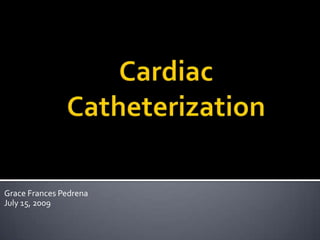Cardiac catheterization is an invasive procedure used to diagnose and treat heart diseases by visualizing the heart's chambers and vessels through the insertion of a catheter. The procedure is indicated for conditions like coronary artery disease and requires careful assessment of contraindications, including allergies and certain medical conditions. Post-procedure care involves monitoring for complications, ensuring the patient's recovery, and discussing lifestyle changes to prevent further heart issues.












































